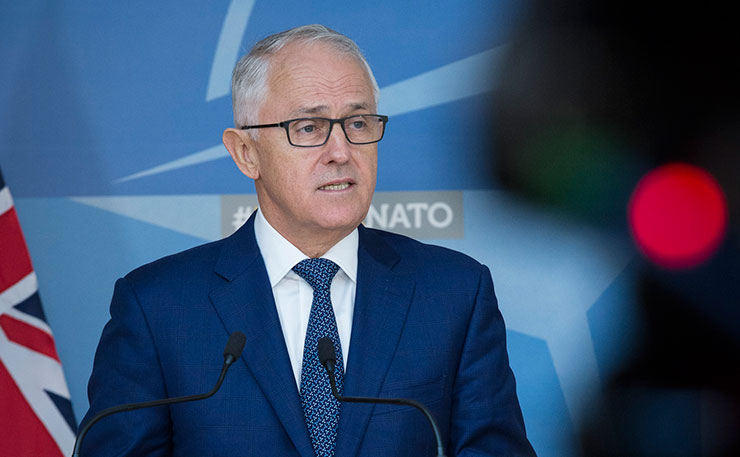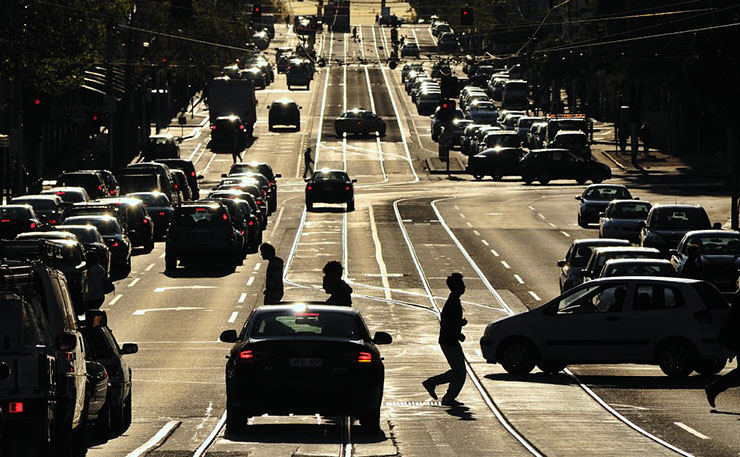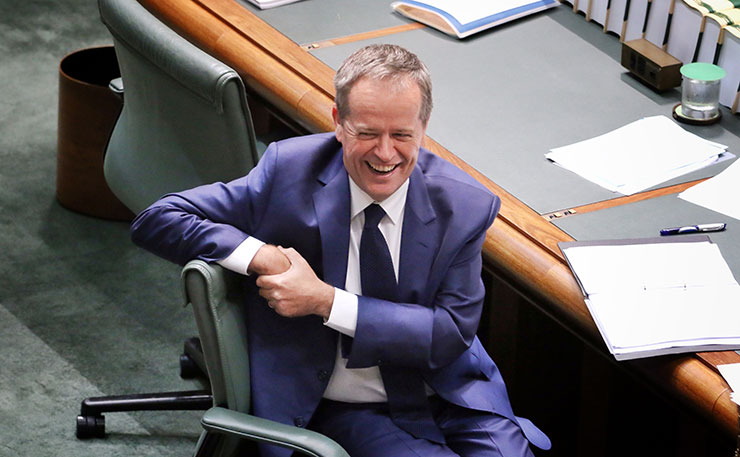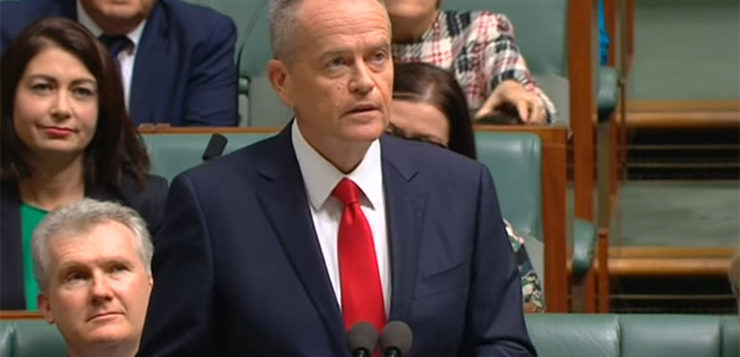DON’T MISS ANYTHING! ONE CLICK TO GET NEW MATILDA DELIVERED DIRECT TO YOUR INBOX, FREE!
Labor’s climate policy is a patchwork quilt of old and new ideas. But will it actually work? Ben Eltham dives in.
Covering carbon politics in Australia is a little like working the obituaries page of a newspaper. It’s where policies go to die. At least the obits are not for people.
Since John Howard first proposed an economy-wide emission trading scheme in 2006, there have been at least a dozen workable proposals for limiting Australia’s greenhouse gas emissions. One of them, Julia Gillard’s Clean Energy Future package, was even made law.
None of those climate policies now survive. The government’s current miserable excuse for inaction, the Emissions Reduction Fund, has spent a few billion for basically zero result; carbon emissions are still going up. The much-talked about National Energy Guarantee was a prop in the lurid drama of Malcolm Turnbull’s demise, but it never even made it to parliament. While Kevin Rudd’s first emissions trading scheme is still ammunition for endless sniping between Labor and the Greens, voters have completely forgotten about it.
But the politics of carbon won’t go away, because climate change won’t either. Global warming is real and intensifying. Politicians are condemned to endlessly debate what to do about it, even if, as is the case with many in the Coalition and some within Labor, they don’t actually want to take action.
The latest front in the endless war opened yesterday, as Labor released more details of the climate policy it will take to the 2019 election.
The ALP’s small target strategy is real. If it really wanted a good run in the media on climate, Labor would have waited until a couple of days after the federal budget. By sneaking it out the day before the budget was delivered, the opposition’s policy was clearly intended for as little sustained political debate as possible.
But given the recent history, it’s hard to be too critical of Labor’s tactics.
Labor tried to do the right thing on climate when last in government — twice. Both times, it was mercilessly attacked by a rabid Coalition led by Tony Abbott, egged on by a pliant and irresponsible media. The trauma was deep and lingering; Labor is still deeply sensitive about its record on climate under Rudd and Gillard.
So this time around, Labor is taking no chances, presenting nothing that could be in any way described as a carbon tax, or even a carbon price.
The new policy is a bolt-on to its already announced policy on energy emissions, which will adapt Turnbull’s ill-fated NEG and impose higher emission reductions targets.
The energy sector will have to reduce its emissions under a timetable that leads to 50 per cent renewable energy by 2030. It will do this by a complicated scheme that is essentially an emissions intensity scheme, without a formal carbon price, but with big incentives for new renewable investment. There is also $10 billion for the Clean Energy Finance Corporation, and a “just transition authority” to help energy workers retrain.

Consumer-scale batteries also get some encouragement, and there is some blue-sky investment for hydrogen energy. While clumsy and overly complex, industry experts seem to think it can work.
While energy has been the main game, yesterday’s announcement gave us the other pieces of the jigsaw. Overall, Labor has committed to a 45 per cent emissions reduction target by 2030. There are policies for transport, for agriculture, and for heavy industry outside the energy sector.
On heavy industry, Labor is taking another of the Coalition’s ideas, the so-called ‘Safeguards’ mechanism, and broadening it to all facilities that emit more than 25,000 tonnes of carbon a year.
Labor’s safeguards tweak is a cap-and-trade scheme. Polluting facilities will be given a timetable for reducing their pollution; if they emit more than this, they will have to buy carbon credits from other sources or pay a penalty equivalent to the difference (but they can’t use the energy sector for this). A ‘strategic industries reserve fund’ will help ease the transition, perhaps by investing in energy efficiency and other innovations.
As usual, exporters remain a protected species. The so-called ‘emissions intensive trade exposed’ industries, like aluminium smelting, will get special treatment. Labor is at least being honest about it, calling these special licenses to pollute ‘tailored treatment’.
Transport is a highlight of Labor’s policy. Finally, after so many years of inaction, Australia will get proper emissions regulations for our cars and trucks. Labor is also embracing electric vehicles, with a target of 50 per cent of new car sales being electric by 2030. Labor will fund charging stations on federal highways and also encourage EVs with a special tax break. But there will be no regulation forcing a halt to sale of conventional vehicles; in a country that loves SUVs and utes, Labor sensibly sees that as electoral suicide.

Agriculture will also get some assistance. Forestry and soil schemes will aim to halt land clearing and enable farmers to benefit from tree planting, likely representing the source of most of the carbon credits that industry will need to buy. It’s about the best that could be hoped for, given the difficulties of addressing carbon emissions on the land.
Importantly, and to its credit, Labor has ruled out the so-called ‘carry over credits’ that flow from Australia’s stored up entitlements under the old Kyoto treaty. These are not real carbon reductions and Labor has resisted the temptation (seized by the government) to use them as an accounting trick to reduce the size of the emissions task. It’s an important win for the environment movement, which lobbied hard to make sure Labor didn’t do this.
Labor’s policy is complex and unwieldy, but it just might work. It addresses the biggest sources of domestic carbon pollution, and it puts concrete (if rather broad and vague) policies in place to reduce that pollution.
That’s not to say the policy is perfect. Far from it. Labor has nothing at all to say about fossil fuel exports, which represent Australia’s largest global source of greenhouse gas emissions. There is no move to stop new coal mining, or even to prevent drilling for oil in sensitive ecosystems in the Great Australian Bight.
Labors’ stance on fossil fuel exports is denial, pure and simple. There is no future for coal in any world in which we take climate change seriously. The power of the fossil fuel unions like the CFMEU has again cruelled Labor’s best intentions. Attractive slogans about ‘just transition’ are meaningless if there isn’t actually a transition out of coal, gas and oil.

Nor has the Opposition said anything about adapting to the warming world. This is a strange omission, when we consider that the warming future has already arrived. Severe droughts in regional Australia, crippling storms and cyclones in the north, and the rapid bleaching of the Great Barrier Reef show us that the costs of climate change are here now, and will only mount in coming years.
While Labor can rightly argue it has a meaningful plan to reduce emissions, it can’t pretend that there won’t be major economic and social dislocations from climate change. Just to take three obvious examples, we’ll need to do something about inland agriculture based on irrigation, we will need extra money to deal with more natural disasters, and we’ll need a major economic plan for the north Queensland tourism industry based n the reef. There is no proper plan for any of these.
Labor’s new climate policy therefore shows us something else: how far the party has walked backwards from the proudest achievement of Julia Gillard’s government.
It’s telling that no-one in the ALP now wants to champion Julia Gillard’s Clean Energy Future package, or even defend a carbon price or an emissions trading scheme as a policy instrument. While Labor’s patchwork quilt will probably do the job, it shows how badly climate politics has degraded since 2012, when Australia had a working legislated economy-wide carbon price that was reducing emissions with negligible economic impact.
Only a Labor government can give us action on climate change. This doesn’t mean we shouldn’t carefully scrutinise the details of Labor’s policies. Certainly, the opposition’s policies are a long way short of what the science tells us is required. The best chance for a stronger policy is if Labor negotiates with the Greens in the upper house, as in 2011. We’ll have to wait for the next Senate to see if that happens, but the two parties are bitter opponents.
In a country where climate change wasn’t such a poisoned political topic, and where powerful vested interests hadn’t cruelled climate policy for a generation, we might be able to choose between better and worse ways of tackling the existential problem.
But we live in Australia in 2019. The Coalition has shown us only contempt when it comes to climate. Labor’s solution, as clumsy and complex as it is, is the only hope we’ve got.
DON’T MISS ANYTHING! ONE CLICK TO GET NEW MATILDA DELIVERED DIRECT TO YOUR INBOX, FREE!
Donate To New Matilda
New Matilda is a small, independent media outlet. We survive through reader contributions, and never losing a lawsuit. If you got something from this article, giving something back helps us to continue speaking truth to power. Every little bit counts.




